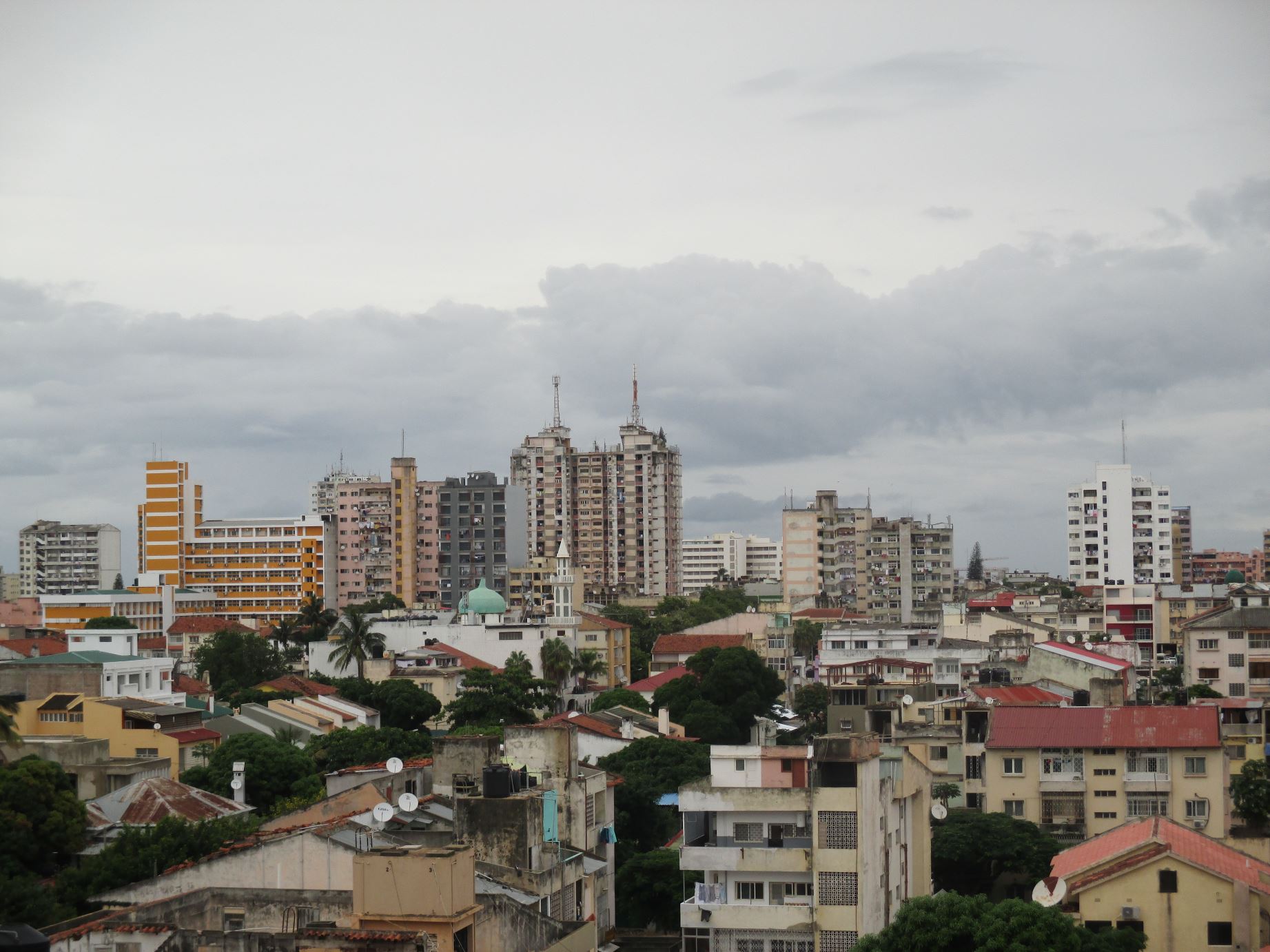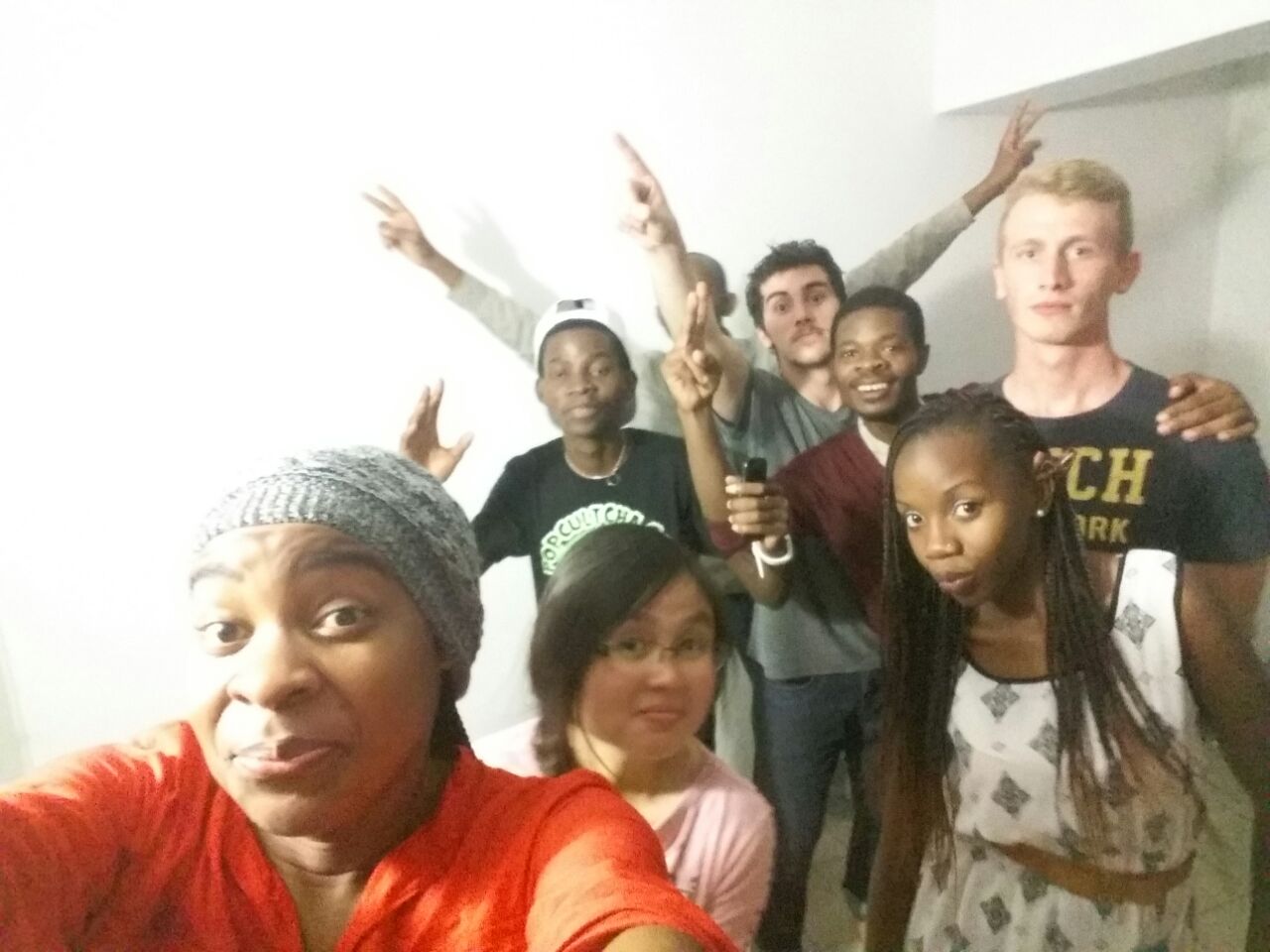by Nessia
1. Looking Back
The time passed so quickly until I realized that six months had passed since I flew back to Delft. It was hard to say goodbye to everyone in Maputo who had been with me from March until May but it was even harder noticing that some goodbyes were left unspoken since I could not say it directly for a last time. However, the next phase of my thesis project was waiting for me: the design of the wastewater treatment plant.

Last field measurement (left to right: Pindula, me, António, Nalda)
I went to Maputo and stayed there from March until May 2016 for my MSc project, entitled “Assessing the possibilities of water reclamation for concrete production in Maputo, Mozambique.” The project is a part of a doctoral research conducted by Noor Jehan Gulamussen, one of my supervisors. We met at TU Delft when we followed the same course and she asked if I wanted to work on an interesting project in her hometown. I agreed right away and found out that it was a great decision. My project was based on the recent rapid economic and population growths in Maputo that drive it to become more metropolitan, with construction sector as one of the pillars to support its transformation. This progressive move is, however, hindered by one of the most crucial problems: water scarcity.

Maputo: grey sky above (painted) grey concrete
Water is essential for the construction sector, especially in concrete production. Concrete needs a proper quantity and quality to meet the expected strength. While the quantity is determined by its ratio with cement, the quality varies for plain, structural and high-strength concrete. Drinking or tap water is commonly used in Maputo but previous experiments worldwide show that there is a possibility to use non-drinking water for concrete production. One of the emerging alternatives is treated sewage. My thesis assessed whether reclaimed water from the sewage can be used as a source for concrete production in Maputo in order to save tap water for domestic purposes.
To determine water demand from the concrete companies, I found 156 concrete companies in Maputo and its surrounding, Matola and Machava to be listed and interviewed 11 of them with the questions about their locations, types of products, production methods, existing water source, number of employees, monthly water tariff, current practices and willingness to cooperate for a preliminary water reclamation project, which were used as the parameters to classify the companies into three scales; small, medium and large, which are depicted as below:
The average amount of water consumption for 11 interviewed companies is between 300 and 350 m3/day and for the actual population of 156 companies is between 4000 – 4500 m3/day. The water price is approximately 0.80 EUR/m3 for the small companies and 0.40 EUR/m3 for both the medium and large companies. This difference might be due to the source of water they had; medium and large companies usually use tap water and sometimes groundwater while small companies usually have various source of water, from tap water, groundwater, individual bored wells or private suppliers delivered by trucks.
After that, I also investigated potential supply sources from different types of source, flow rates and locations, such as the outlet endpoints from houses, the wastewater treatment plant and the effluent from other industries. The influent of the wastewater treatment plant was considered the best source for the preliminary plant design with a flow rate of around 5500 m3/day.
For the concrete itself, I studied available standards worldwide and previous works to find the safe ranges of water quality for concrete. Then, I conducted field and laboratory measurements to provide preliminary information about existing water quantity and quality. I used the results as the basis for designing a treatment plant from the demand of 11 interviewed companies, with lower effluent quality than tap water, yet sufficient for concrete production. I also calculated preliminary dimensions for the large scale plant from the demand of 156 companies.
I designed the system as a modular scheme to provide different effluent qualities and potential changes, such as the increase of the influent flow rate, the option of combining the new system with the existing plant, etc. The system is divided into four phases. Phase 1, consisting of a coagulation tank, four flocculation tanks and a dissolved air flotation tank, removes fat, oil and grease, phosphorus and suspended solids. Phase 2 removes remaining suspended solids by a rapid sand filtration. Phase 3, comprising nine units of nanofiltration in one skid, removes dissolved solids to meet the demand of higher strength concrete. The last phase is disinfection which was excluded since the removal capacities from the previous phases are already sufficient. Thus, these three packages give three different water qualities for any required strength of concrete. What if the influent quality changed later? Changes are inevitable, there might be other new sewer endpoints with even lower water quality or the wastewater treatment plant might have another pre-treatment for the influent. That is why I was inspired by the modular system that could be assembled in various schemes; it can be altered by another treatment or by-passed to the necessary phase.
I arranged three packages with different available treatment phases and, of course, the cost. The companies can choose the packages depending on the expected effluent quality from each company. The basic package only consists of phase 1 and costs 0.30 EUR/m3. The intermediate package, comprising phase 1 and 2, costs 0.40 EUR/m3. The advanced package, consisting of phase 1 and 3, costs 0.80 EUR/m3. Only the price of the advanced package is higher than the actual tap water price. The delivery of the effluent is performed by renting trucks since it is less expensive than constructing new pipelines.
The design shows that producing concrete with reclaimed water from treated sewage is possible to be performed in Maputo and the sewage does not need to reach drinking water quality. It is the starting point to increase the availability of usable water and the opportunity of supplying tap water as much as possible for domestic purposes. For more details, you can find my thesis here.
2. What comes after
While finalizing my report, my mind flashed back to my last days in Maputo. I had a teary goodbye with Nalda, my local partner for this project who concentrated on the wastewater treatment plant as her bachelor thesis project (you can find more about here in my first and second posts). We had shared not only samples for measurements and recordings for interviews, but also groceries and life stories, and therefore I am truly grateful to her.

The last “wefie” with Nalda (in the front, holding the camera) and friends in the dormitory
My friends there arranged a surprised farewell party. They successfully made me deeply moved. I do miss them. They have taught me some of the best lessons in my life. They showed me to be friends and give helping hands to anybody regardless their skin, language and baggage. One of them is similar to the local wisdom of my hometown in Indonesia, and has been considerably relevant to me during these tough and thoughtful weeks; “When life is hard, laugh hard.” Hahaha.

Surprised farewell party from my friends (você será sempre hoyo-hoyo means you are always welcome, and “hoyo-hoyo” comes from Xichangana, the local language within Maputo area).
I wish to thank everyone who helped me finishing my project, especially Prof. Luuk Rietveld as my chair committee, Noor and André as my supervisors. They always have ways to drag me from my confusions.
I am also thankful to Dr. Nelson as my co-supervisor, Eng. Ferro from DAS (Departamento de Água e Saneamento) for his information and assistance during the sampling period in the wastewater treatment plant, to Ali Assane for helping me plotting the coordinates in the map, to University of Eduardo Mondlane for the support, housing and care from fellow local students and youth organizations, to Embassy of Indonesia in Mozambique for the hospitality during my period in Maputo and others who cannot be mentioned here but remained in my heart.
I do believe that although it is going to be the end of my thesis project, the journey itself should not be ended. In fact, this is only the beginning for Maputo to transform their perspective towards reclaimed water, and also for me to learn deeper about it. There are still other projects to be done and results to be implemented. The best is yet to come. Be prepared, Maputo!





















